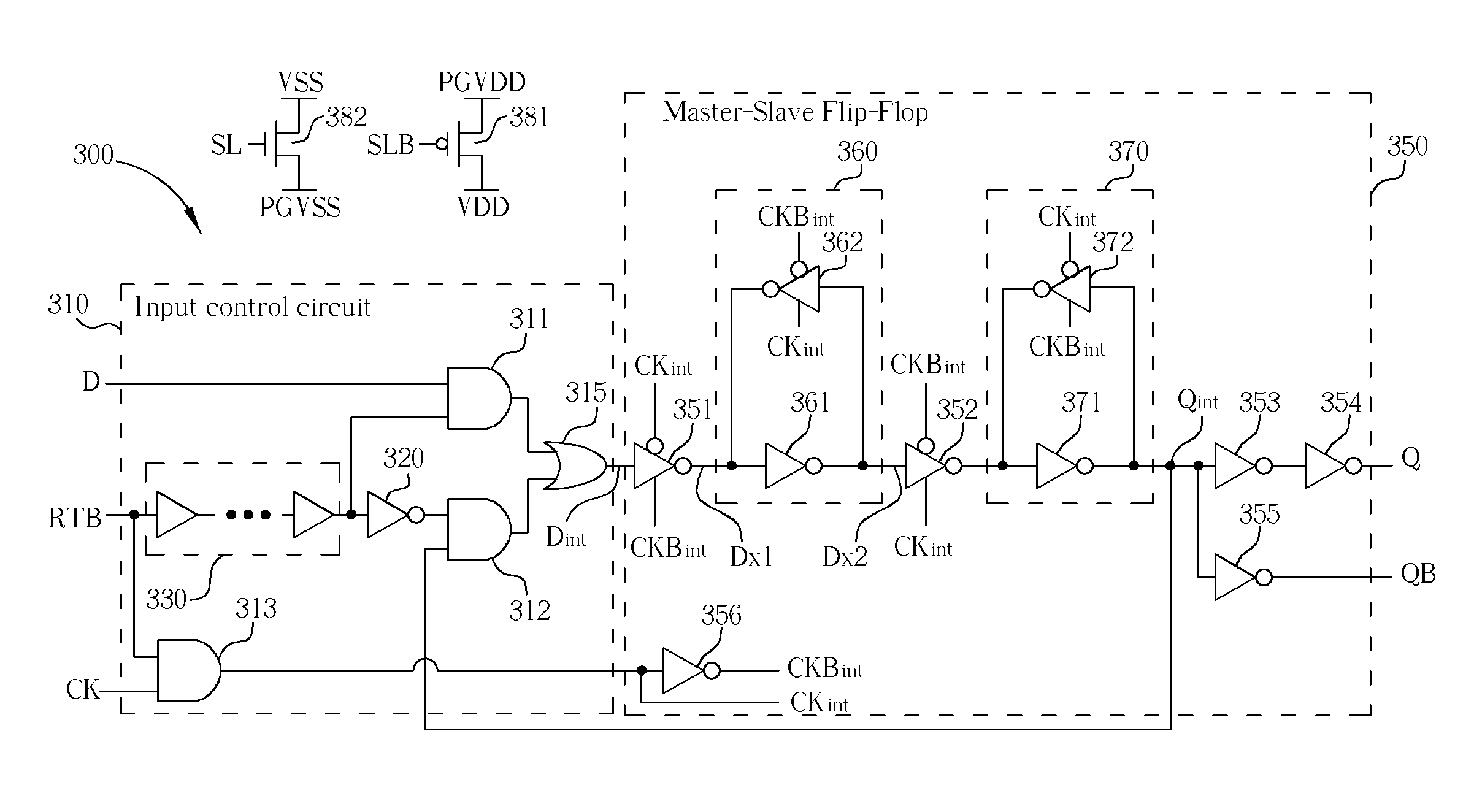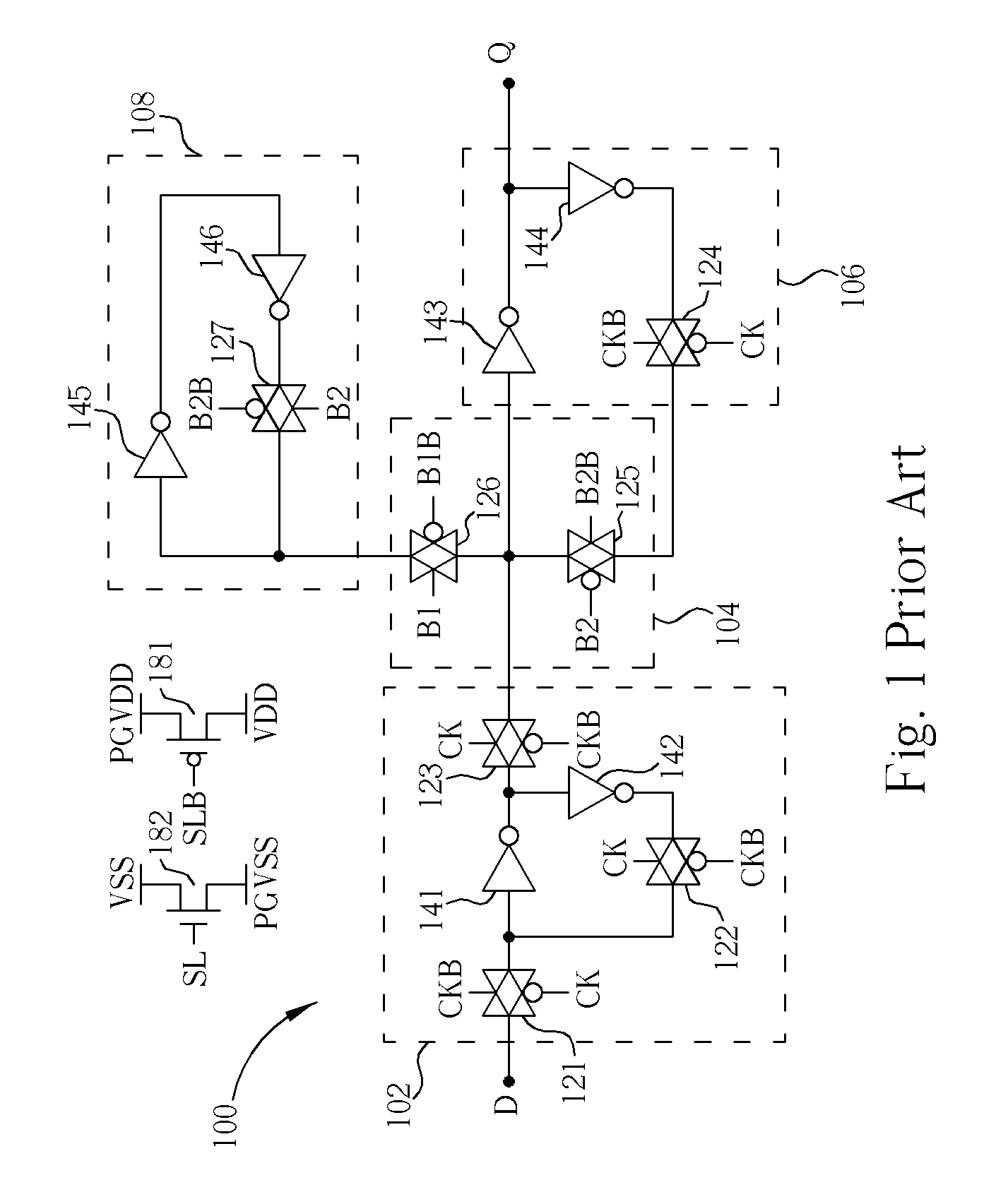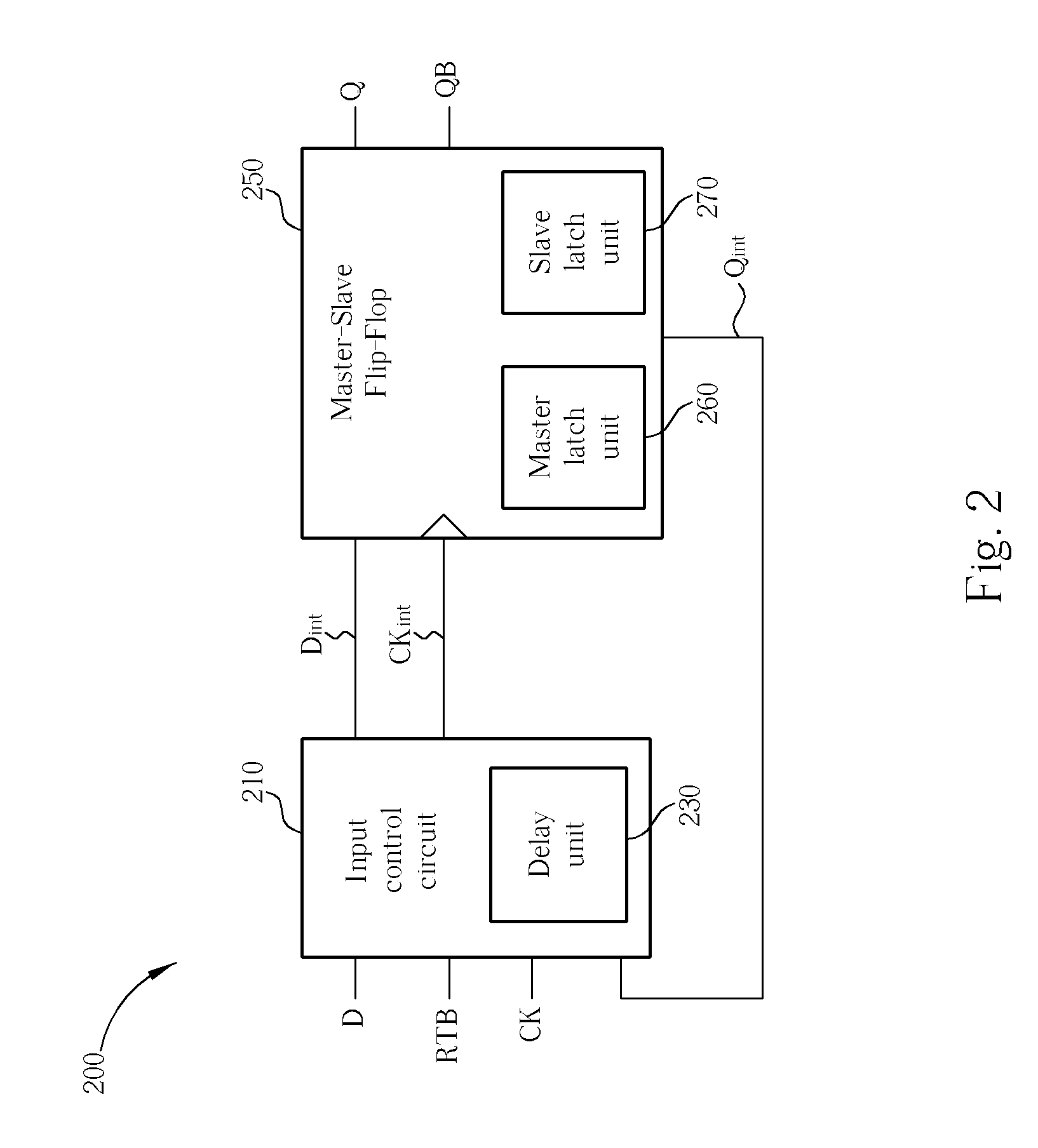Data retention cell and data retention method based on clock-gating and feedback mechanism
a data retention and clock-gating technology, applied in the field of data retention cells and data retention methods based on clock-gating and feedback mechanisms, can solve the problems of power consumption of handheld devices significantly affecting battery life, and data signals of circuits being stored in flip-flops may be lost in power-saving mod
- Summary
- Abstract
- Description
- Claims
- Application Information
AI Technical Summary
Benefits of technology
Problems solved by technology
Method used
Image
Examples
Embodiment Construction
[0019]Hereinafter, preferred embodiments of the present invention will be described in detail with reference to the accompanying drawings. For signal explanation, a logic state 1 is used to describe one logic state that assumes a high logic level, and a logic state 0 is used to describe the other logic state that assumes a low logic level. Here, it is to be noted that the present invention is not limited thereto.
[0020]Please refer to FIG. 2, which is a block diagram schematically showing the structure of a data retention cell 200 according to the present invention. The data retention cell 200 comprises an input control circuit 210 and a master-slave flip-flop 250. The input control circuit 210 comprises a delay unit 210. The input control circuit 210 has a first input port for receiving an input data signal D, a second input port for receiving a retention signal RTB, a third input port for receiving a clock CK, a fourth input port for receiving a feedback signal Qint, a first output...
PUM
 Login to View More
Login to View More Abstract
Description
Claims
Application Information
 Login to View More
Login to View More - R&D
- Intellectual Property
- Life Sciences
- Materials
- Tech Scout
- Unparalleled Data Quality
- Higher Quality Content
- 60% Fewer Hallucinations
Browse by: Latest US Patents, China's latest patents, Technical Efficacy Thesaurus, Application Domain, Technology Topic, Popular Technical Reports.
© 2025 PatSnap. All rights reserved.Legal|Privacy policy|Modern Slavery Act Transparency Statement|Sitemap|About US| Contact US: help@patsnap.com



